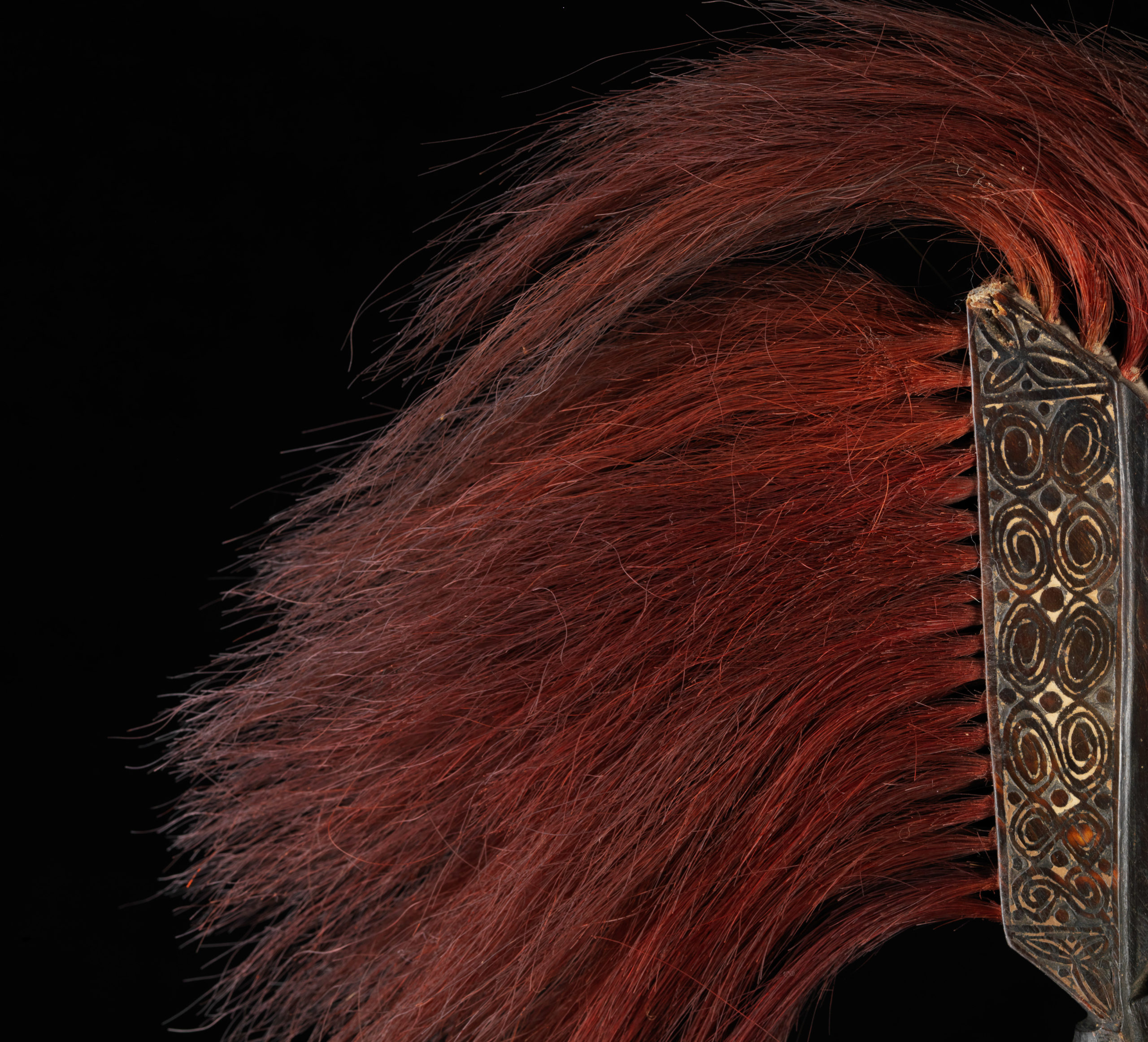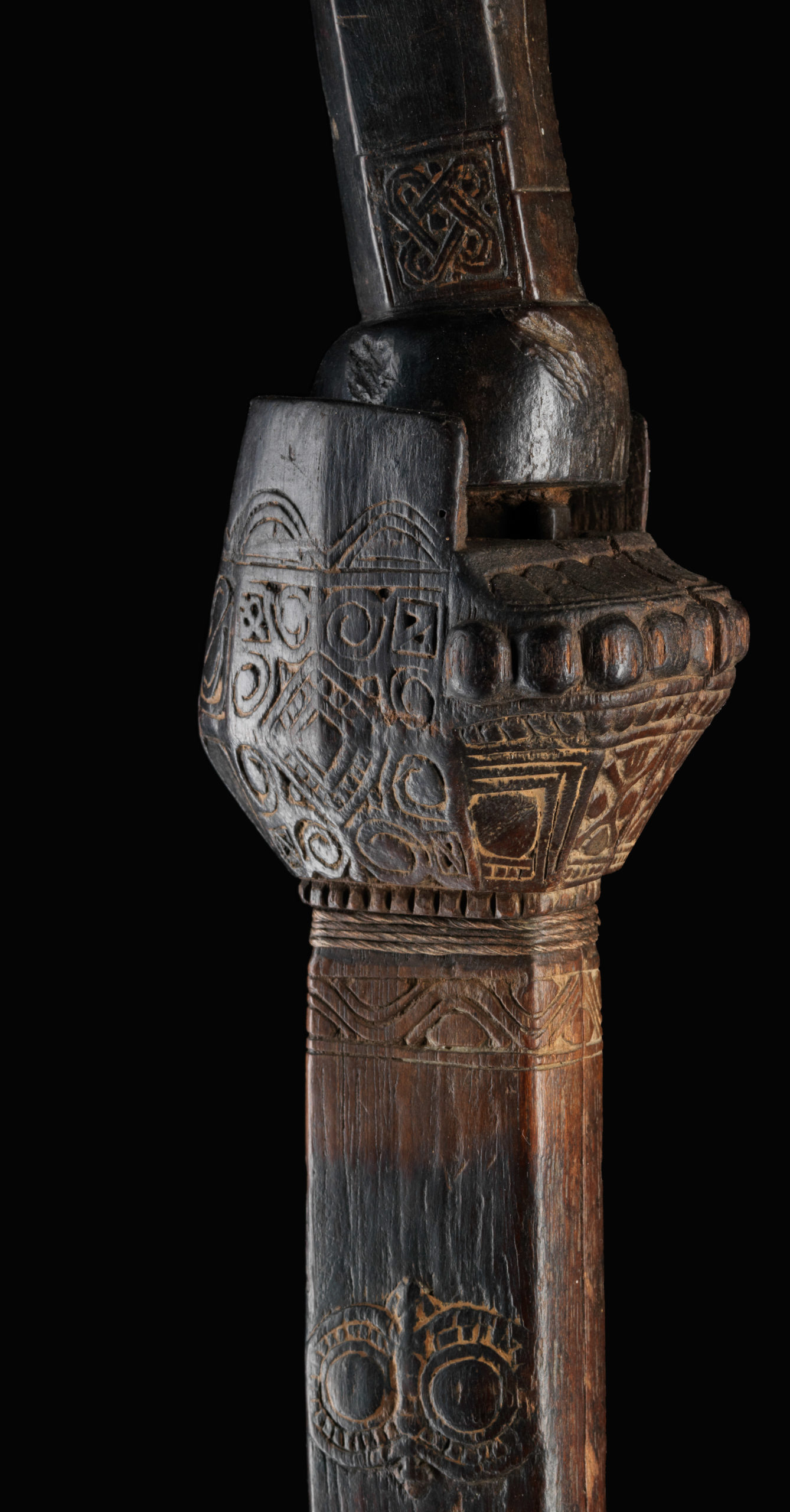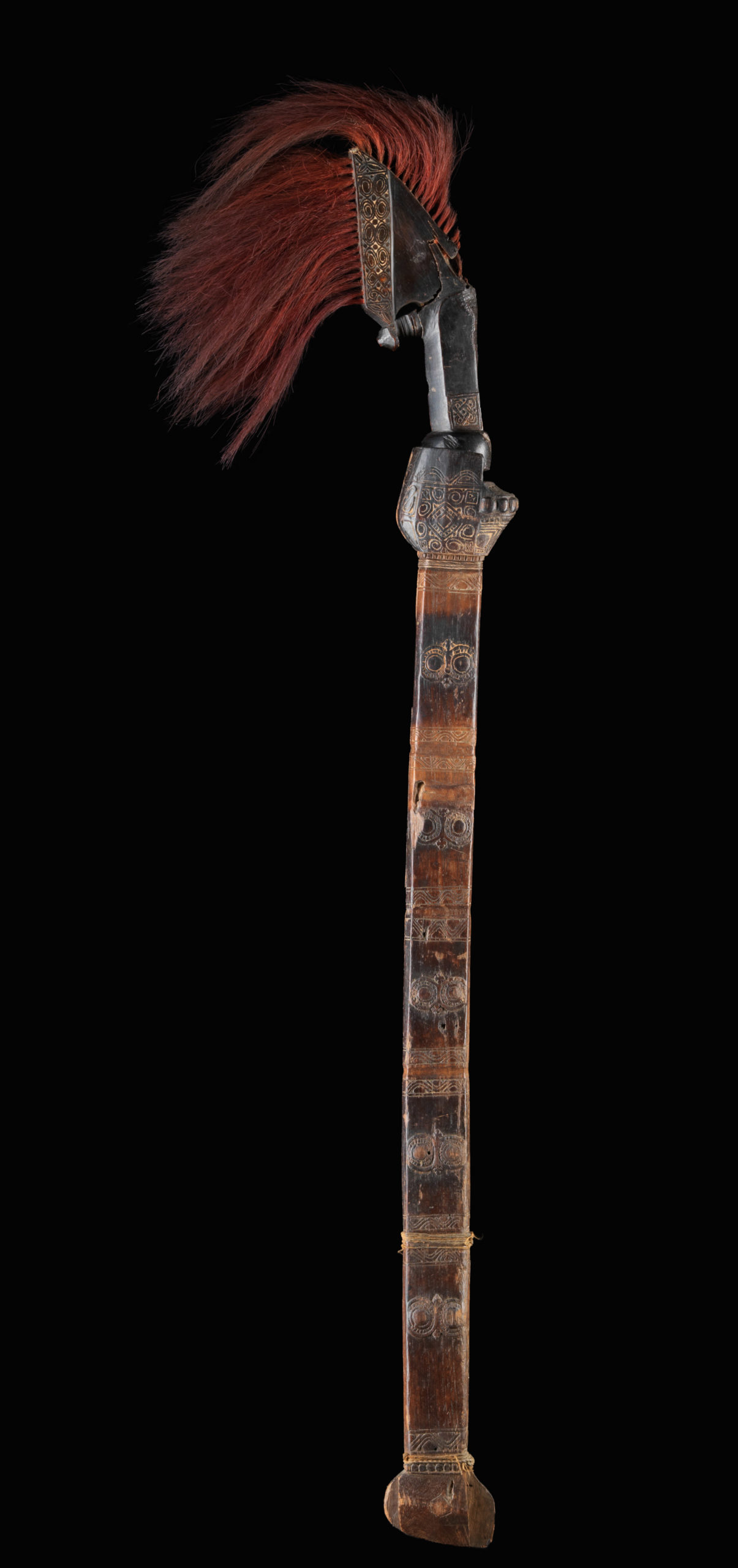Sword „surik“ „atoni“
The blade of this representative atoni sword is of European origin (probably made in Solingen) and bears the signet of the VOC with the date 1758. Clear signs of wear and tear indicate heavy use. It is shortened in the front part.
The handle is made of dark buffalo horn. The spiral motifs carved into the bas-relief can be easily related to art forms from Irian Jaya (Asmat). Originally they are probably abstract dragon representations. The pommel, whose two-dimensional form is based on an abstracted animal head with a torn throat or a hornbill head, is typical for Timor and carries red dyed goat hair, probably of a sacrificial animal. Above the thickened base the woven knot can be seen, which is also of great importance for Toraja art and goes back to Dong S’on ornamental forms.
The mouth of the two-part wooden scabbard shows an abstracted ideal village from another world with the Pleiades motif (the spirals) as a symbol for the axis mundi, or a world tree with head motifs – the interpretations here are contradictory, but quite similar in meaning. The exact meaning of the paired motifs on the vaginal body is also unclear.
The sword probably dates back to the 18th century due to the dated blade, uniform appearance, provenance and patina.
| Object | Sword „surik“, „atoni“ |
| Culture | Central or East Timor |
| Time | 19th century (before 1890) |
| Dimensions | Length 80 cm |
| Material | Wood, steel, horn, goat hair dyed |









